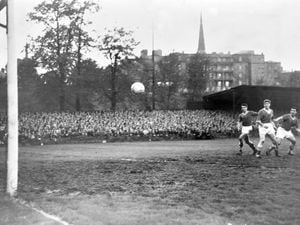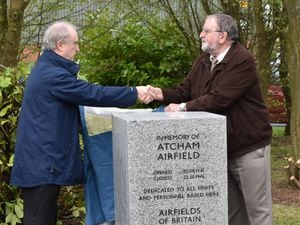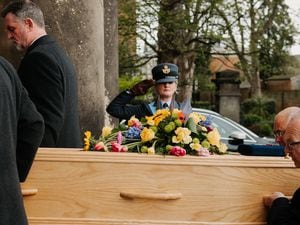Will it be missed? Clock is ticking for 1960s Shirehall
You'll miss it when it's gone.
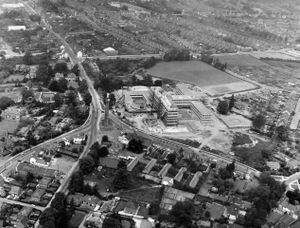
Well, not everybody will, obviously, as this bit of 1960s civic architecture on the eastern outskirts of Shrewsbury isn't to everybody's taste.
Historic England doesn't think the Shirehall is of enough architectural or historical merit to be given listed status, which would give it some protection against demolition.
With Shropshire Council planning to move out by 2023 and sell the site, that is a potential fate which now looms.
As for the council, its plan is to move back into the town centre, neatly reversing the decision of the 1960s to quit the town centre – the previous Shirehall was in The Square – for the edge-of-town site.
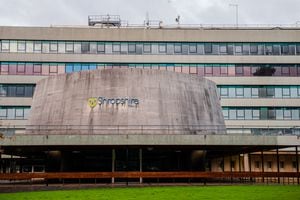
Back on July 25, 1964, when the foundation stone was laid optimism abounded.
Former council chairman Sir Offley Wakeman, who had headed the committee set up to steer the project through, said at the ceremony that he was sure that future generations would be grateful to the council for its decision to build the new Shirehall.
"And I am quite sure that if I am left to wander in this world, for my sins, I shall hear people saying what a wonderful generation I belonged to," he added.
Sir Offley was well into his 70s at the time. He died in 1975.
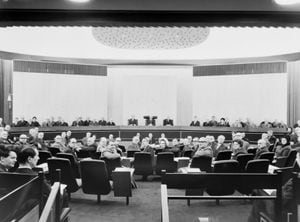
The Shrewsbury Chronicle said that the new Shirehall would mean the county had a modern administrative headquarters of practical value "and, of which, architecturally it may be proud."
The building was designed by the county architects' department headed by Ralph Crowe and at the ceremony, observing an old custom, Mr Crowe handed Sir Offley a block of perspex into which were set the current coins of the realm, which Sir Offley put in a cavity in the foundation stone.
The new building was a long time coming.
The idea of centralising all county council administration on the outskirts of Shrewsbury was first mooted in the 1930s, and revived after the Second World War.
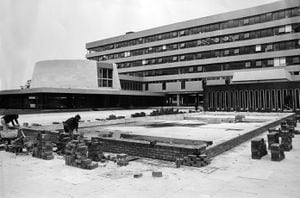
Before the arrival of that 1960s office complex, the road went both sides of The Column. A casualty of the redevelopment was a building called The Cottage, which was erected by public subscription.
It comprised a parlour, kitchen and bedroom for a veteran soldier appointed to show people The Column.
Another casualty was a building known as Nearwell, an old town house which was used as student accommodation. A few of the trees were retained.
Cost of the new building was put at £1.8 million but the final bill proved to be bigger than that.
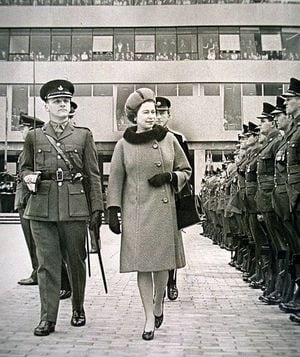
It opened for public business on April 18, 1966, but the official opening was by the Queen on March 17, 1967. It was the largest public building built in Shropshire since the war.
Alongside the county council complex was built the county's new assizes, replacing the court which was held at the old Shirehall complex.
Among the features of the new building was a fan-shaped council chamber, an ornamental pool and fountains, and in the main entrance a cast iron mural, made by a traditional sand moulding process at Coalbrookdale, was created depicting Shropshire industries.
Planned as a connected complex of blocks around enclosed courtyards, each courtyard was landscaped differently and one contained a piece of sculpture in cast aluminium by Michael Eastham.
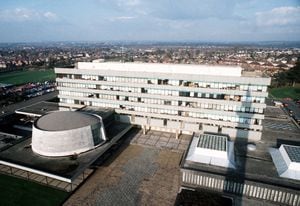
According to a 1967 programme for the official opening: "The council has installed an up-to-date IBM model 360/30 computer, being the first of this particular type in the country. Information is fed in by means of punched paper tape and is stored on magnetic discs."
Included in the site complex was a separate single storey building housing the Civil Defence department.
As built the Shirehall had about 650 staff and was also the headquarters for "many travelling staff."
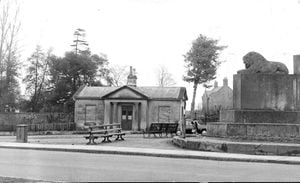
By 1999 there were 1,100 people working there, although not all directly employed by the council, and it boasted 114,000 sq ft of useable office space.
The previous Shirehall in The Square had been built in 1834 to a design by Sir Robert Smirke, but a serious fire in November 1880 gutted the whole upper part amid an incompetent and chaotic firefighting operation. The building was reconstructed internally.
It contained two courts, one of which was used as a council chamber.
After the council moved out in 1966 the building lay empty and there was a campaign to save it, but it was demolished in 1971 to make way for the Princess House shops, offices and car park development.


